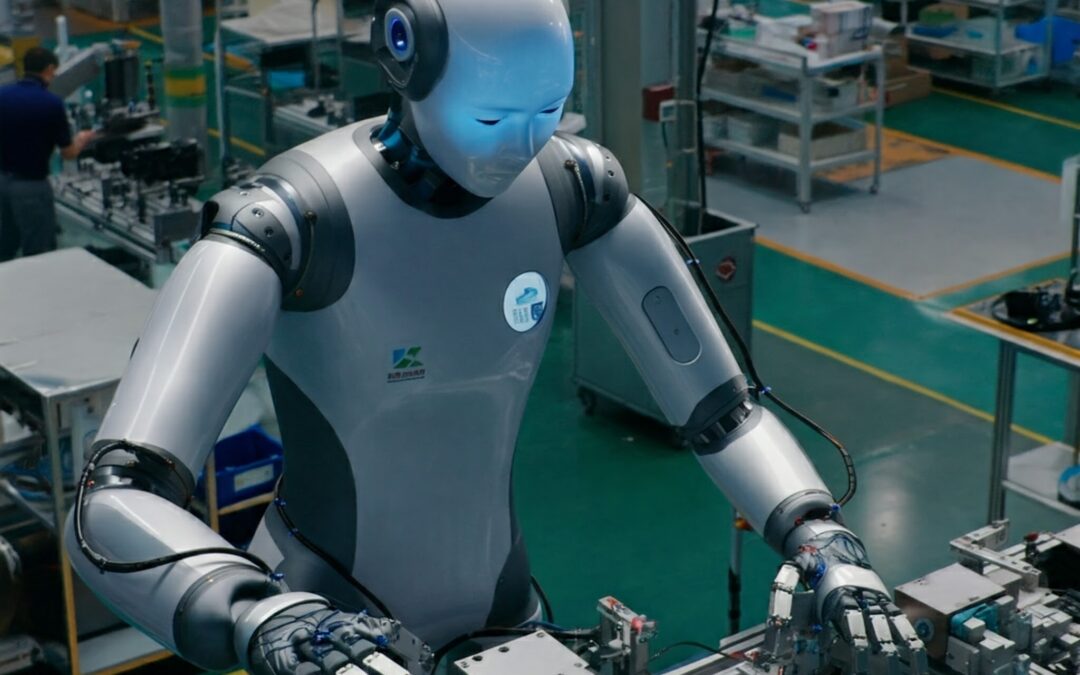The world is on the cusp of a profound transformation, driven by the rapid advancement and adoption of artificial intelligence (AI). This isn’t just another technological shift; it’s a revolution that will fundamentally alter the way we work, live, and interact with the world around us. While the potential benefits of AI are enormous, so too are the challenges it presents, particularly for those in leadership positions. C-Level executives and middle managers must adapt quickly and decisively to navigate this new landscape or risk being left behind.
The Changing Face of Work:
AI is already automating a wide range of tasks across various sectors, from manufacturing and logistics to customer service and finance. A 2023 report by the World Economic Forum predicted that AI would displace 85 million jobs globally by 2025, while simultaneously creating 97 million new roles. This shift is not just about job losses; it’s about a fundamental restructuring of the workforce. Repetitive, manual tasks are increasingly being handled by machines, freeing up human workers to focus on higher-level cognitive skills, creativity, and complex problem-solving.
This trend has profound implications for businesses. Companies that effectively leverage AI can gain a significant competitive advantage, boosting productivity, reducing costs, and driving innovation. A McKinsey study found that AI adoption could potentially deliver a global economic boost of $13 trillion by 2030. However, this requires a strategic approach to workforce planning and development.
The Leadership Challenge:
For leaders at all levels, the AI revolution presents a unique set of challenges. They must not only understand the technology itself but also anticipate its impact on their organizations, their employees, and their own roles. This requires a shift in mindset, from managing tasks to managing talent, from controlling processes to fostering innovation. However, the specific challenges and required adaptations vary depending on the level of management:
C-Level Executives: The Visionaries
- Strategic Realignment: C-suite executives must lead the charge in reimagining the organization’s strategy in light of AI. This includes identifying new business opportunities, re-evaluating existing business models, and ensuring that the organization’s culture and infrastructure are conducive to AI adoption.
- Ethical Stewardship: As AI becomes more pervasive, ethical considerations become paramount. C-level leaders must establish clear ethical guidelines for the development and use of AI, ensuring that these technologies are deployed responsibly and transparently.
- Talent Transformation: The C-suite needs to champion a comprehensive approach to workforce transformation. This involves investing in reskilling and upskilling initiatives, fostering a culture of lifelong learning, and attracting new talent with the skills needed to thrive in the AI era.
Middle Management: The Bridge Builders
- Operationalizing AI: Middle managers are responsible for translating the organization’s AI strategy into concrete actions. This involves identifying opportunities to automate processes, integrating AI tools into existing workflows, and managing the transition for their teams.
- Developing AI Literacy: Middle managers need to develop a strong understanding of AI concepts and capabilities, not just to effectively implement AI solutions but also to communicate effectively with both their teams and upper management.
- Empowering and Supporting Teams: As AI changes the nature of work, middle managers play a crucial role in supporting their teams through the transition. This involves providing clear communication, offering training and development opportunities, and addressing concerns about job security and the changing skills landscape.
Front-Line Supervisors: The Human Touch
- Human-Machine Collaboration: Front-line supervisors are at the forefront of human-machine collaboration. They need to understand how to effectively integrate AI tools into their teams’ workflows, ensuring that humans and machines work together seamlessly.
- Maintaining Motivation and Morale: As AI takes over routine tasks, front-line supervisors need to find new ways to motivate and engage their teams. This may involve focusing on more complex and creative tasks, emphasizing the importance of human skills like empathy and communication, and fostering a sense of purpose and meaning in the work.
- Upskilling on the Fly: Front-line supervisors need to be able to quickly adapt to new AI tools and technologies. They also need to be able to identify skills gaps within their teams and provide on-the-job training and support to ensure their team members can effectively use these new tools.
The Dangers of AI Decision-Making:
While AI can be a powerful tool for decision-making, it’s crucial to recognize its limitations. AI systems are trained on data, and if that data is biased or incomplete, the AI’s decisions will reflect those flaws. Furthermore, AI lacks the human capacity for empathy, judgment, and ethical reasoning.
This is where human oversight becomes essential. Leaders must ensure that AI-driven decisions are aligned with the organization’s values and goals. They need to establish clear processes for reviewing and validating AI outputs, and they must be prepared to intervene when necessary.
The Future of Leadership in the AI Era:
As AI continues to evolve, it’s likely to assume an even greater role in decision-making, potentially even surpassing human capabilities in certain areas. This raises the question: what will the role of leadership be in a world where AI can make many of the decisions that were once the exclusive domain of humans?
The answer lies in the uniquely human qualities that AI cannot replicate. Leaders of the future will need to be visionaries, strategists, and communicators. They will need to inspire and motivate their teams, foster collaboration and creativity, and navigate the complex ethical and societal implications of AI.
Conclusion:
The AI revolution is not just a technological disruption; it’s a leadership imperative. Leaders at all levels must embrace this change, developing the skills and strategies necessary to lead their organizations in the AI era. This requires a willingness to adapt, to learn, and to embrace new ways of thinking. By doing so, they can ensure that their organizations not only survive but thrive in this exciting new world.
